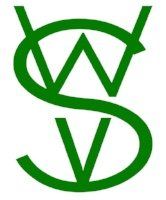Village Hall Committee 2
Village Hall Committee 2
The estimated cost of £20,000 made a target of £25,000 realistic to allow for inflation. Up tp March 1974, the maximum grants available were 25% from Bingley UDC and 50% from the Ministry of Education and Science. After that date, the maximum possible would be 66.6%. Assuming maximum grants, the village would need to raise about £7,000. This should be done as quickly as possible, as fund raising campaigns generally tailed off and costs could rise. Although most of it would have to come from a few large events, small ones such as coffee mornings were desirable to involve a lot of people who could feel they had a stake in the success of the project. The hall group proposed to launch their fund raising with a series of coffee evenings at which they would promote a 200 Club.
This was the meeting which decided that a separate village hall account should be opened and the treasurer become assistant treasurer of WVS.
Gerald Tyler reported that the executors of the last trustees of the Mechanics Institute had been traced and it was now possible for the village society to push for appointment of new trustees. He reminded them that the building had a cash value. Even as a demolition site he had been given an estimate of £1000-£1500.
At the January 1972 meeting of the general committee, £100 was transferred from general funds as a donation to start off the village hall account.
No time was lost. Preliminary plans were presented at a public meeting in the school on May 16th. Dr Wheelock explained their ideas, the grant possibilities, which depended on the village share being raised, and the need for local support. The plans were well received – the local papers reported an almost unanimous vote of confidence in the village hall committee.
The 200 Club was quickly filled and its first draw took place at a disco dance in the school hall on May 20th. Later in the year a second 200 Club was filled, the two bringing in a steady income. The committee set up a Folk Club at the Ling Bob pub and Bingo at the Mechanics, though these only generated small amounts of income. A team, complete with caravan, toured the village, visiting many houses to talk about the hall, encourage people to join a 200 Club, ‘buy a brick’ or otherwise contribute.
There were just a few dissident voices. Some said there was no need for a hall, though later some of these were eager enough to join in activities made possible by the existence of the hall. One or two protested that Wilsden needed another school and the money should have been for that. They would not accept that the Education Authority’s decisions about where to site new schools has nothing to do with the ability of a community to raise a portion of the cost and grants towards a community centre are not out of the same pot as money for schools.
However, most sections of the community supported the society’s efforts. Harecroft Ladies’ Circle donated part of the profit from their annual show to the fund. Wilsden Senior Citizens concert party ‘The Wot Nots’ put on a show in the Methodist Chapel for the hall fund. It was a sell-out and raised £50, no small achievement at the 1972 ticket price of 20p.
A steady fund raiser started that summer when the first WVS Teddy Bear stall was taken to Bingley Show. That first year, prizes and sealed tickets were supplied by a firm specialising in fairground games, but the hall committee soon found a cheaper source of bears at a Bradford factory, which enabled them to made more money while also satisfying their customers with better odds. The stall went to Barnoldswick and Earby galas and then almost every summer weekend to shows and galas all over West Yorkshire. In 1973 the initial schedule for the Teddy bear stall, sometimes accompanied by a ‘Vino Wheel’, was May 12th Earby, May 21st Shipley, June 2nd Sutton, June 30th Eldwick, August 8th Bingley. These stalls raised £40 - £60 each time. Stalwart members even manned outdoor stalls in Wilsden in winter, selling soft toys on the four Saturdays before Christmas.
Not every fund raising scheme came to fruition. A couple of those at least demonstrate the wide range of ideas and willingness to explore them. There was a plan to work with the Telegraph and Argus to publish and sell a booklet, ‘People’s Pubs’ a guide to be based on hostelries recommended by the newspaper’s readers. This was dropped when the paper decided not to be involved. Much more ambitious was the plan to organise visits to Bronte country for Americans. Society members would provide accommodation and arrange a programme of excursions and entertainment. A lot of work went into this one, including contacting American forces’ bases in England to sound out possible response. It was eventually given up after advice from the travel industry about likely problems including the cost of insurance.
Copyright © Astrid Hansen.
All Rights Reserved.
